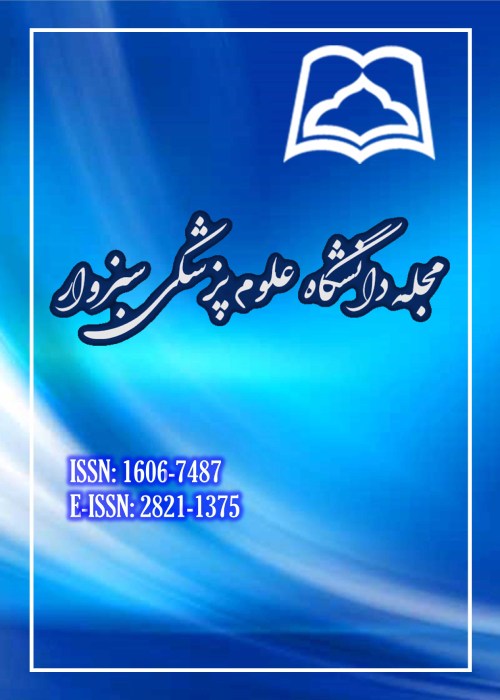Affecting factors the choice of delivery and attitude of pregnant women admitted to the civil hospitals, the Social Security Organization in 2013
Author(s):
Abstract:
Background
Cesarean delivery is usually limited to cases where it is not possible through normal path, or is associated with serious risks for the fetus and mother, therefore it is expected, Caesarean section should be used in limited and specific cases and the rate of it does not exceed certain limits. Unfortunately,nowadays reported cesarean section rate is more than acceptable in the country. Lack of awareness of the complications of cesarean and negative attitude toward normal vaginal delivery was of the causes of the increased tendency of pregnant women to have cesarean. The aim of this study was to investigate the factors affecting on selection of the methods of delivery and attitude of pregnant women admitted to the civil hospitals Social Security Organization in 2013. Materials And Methods
This research was descriptive–analytical and cross–sectional. In this study of 2521 pregnant women in 67 civil hospitals Social Security Organization across the country had referred in the summer of 2013, using simple random sampling were examined. For data collection, a questionnaire including demographic characteristics, the questions about reasons for selection of cesarean, and attitude measurement toward vaginal delivery and cesareanwas prepared by voting of midwives and obstetricians and then,after final approval by test-ratest method,completed through interviews withpergenant mothers. For the data analysis were used of SPSS 22 software and chi-square and T-tests. Results
The mean age mothers were 27.64±0.21 and also 57% of them had a higher education diploma. The cesarean rate was 50.7% in women in the study. 57% of women tend to be more moderate cesarean (p<0.001). Their main reasons for choosing cesarean were analgesia operating procedures, the lack of harm to the fetus, preventing tearing and deformed genitalia, do not require frequent examinations and suggestion of doctor or midwife. Significant statistically association was between current birth mothers with maternal age, spouse's age, age at marriage, level of Education, job, income, previous delivery,parity, stillbirth, infertility and miscarriage and a family history of cesarean section (p<0.001). There was significant relationship between level of knowledge and attitude toward cesarean delivery (p<0.001). But there was no found significant association between the attitude of the normal vaginal delivery with mother's level of knowledge (p=0.31). Conclusion
According to the survey results and the relationship between attitudes to caesarean and selection, it is essential to deal with the excessive increase in cesarean and achieve an acceptable limit this type of delivery (cesarean section), Necessary actions should be performed to raise the awareness of women about the benefits of normal vaginal delivery and disadvantages of cesarean section.Keywords:
Language:
Persian
Published:
Journal of Sabzevar University of Medical Sciences, Volume:21 Issue: 2, 2014
Page:
310
magiran.com/p1295075
دانلود و مطالعه متن این مقاله با یکی از روشهای زیر امکان پذیر است:
اشتراک شخصی
با عضویت و پرداخت آنلاین حق اشتراک یکساله به مبلغ 1,390,000ريال میتوانید 70 عنوان مطلب دانلود کنید!
اشتراک سازمانی
به کتابخانه دانشگاه یا محل کار خود پیشنهاد کنید تا اشتراک سازمانی این پایگاه را برای دسترسی نامحدود همه کاربران به متن مطالب تهیه نمایند!
توجه!
- حق عضویت دریافتی صرف حمایت از نشریات عضو و نگهداری، تکمیل و توسعه مگیران میشود.
- پرداخت حق اشتراک و دانلود مقالات اجازه بازنشر آن در سایر رسانههای چاپی و دیجیتال را به کاربر نمیدهد.
In order to view content subscription is required
Personal subscription
Subscribe magiran.com for 70 € euros via PayPal and download 70 articles during a year.
Organization subscription
Please contact us to subscribe your university or library for unlimited access!


